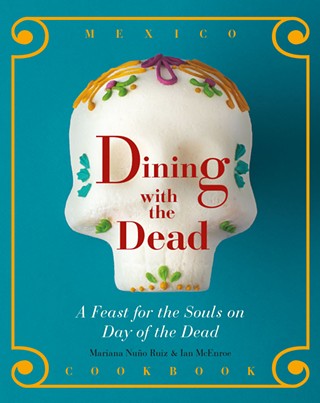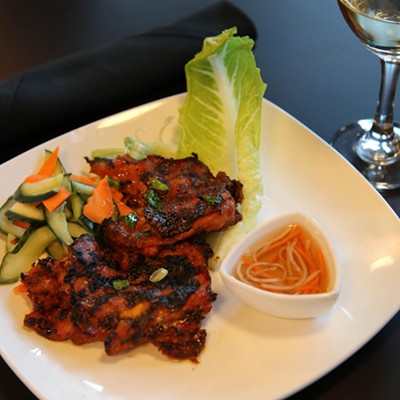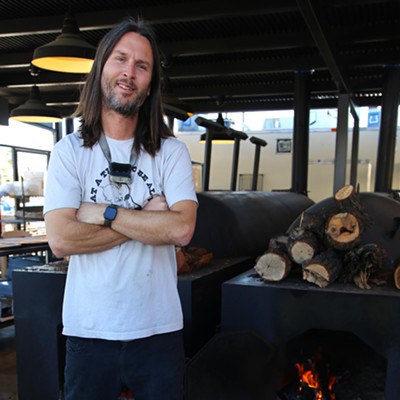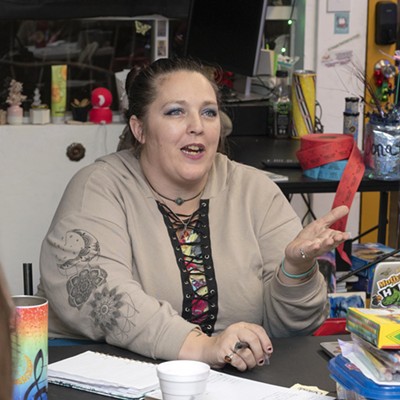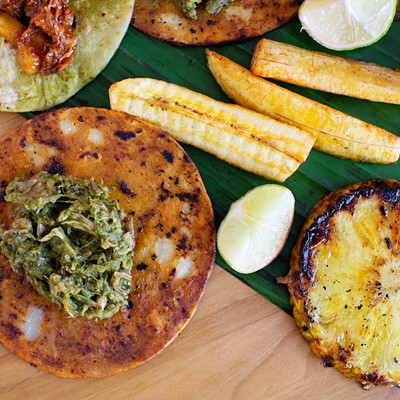Anyone who’s participated in a Day of the Dead parade knows how plentiful and unique the festivities are. In Tucson, the holiday is even more specialized. So in order to capture the various sides of Day of the Dead, a book would have to draw on numerous sources and cultures—and that’s exactly what a cook and photographer couple have done.
In their new book Dining with the Dead: A Feast for the Souls on Day of the Dead, Mariana Nuño Ruiz and Ian McEnroe gather more than 100 recipes and variations to show the complexity and history of one of the Southwest’s favorite holidays.
Dining with the Dead is both a cookbook and a cultural journey, teaching about food and drinks, but also the traditions, history and stories passed on by individual families. Research for the project took Ruiz and McEnroe throughout Mexico and they gathered recipes and history from libraries, local cooks, cultural historians and native families.
“The theme of the cookbook came from our editor Aaron Downey, who contacted us after stumbling upon our blog post about Día de Muertos,” Ruiz said. “Because Día de Muertos involves so much more than food, we knew the book needed to be structured differently from a regular cookbook. So we proposed a book that contained all the aspects of the tradition; from its history, origins, culture, and how Día de Muertos is celebrated today in Mexico.”
Ruiz and McEnroe are currently based out of Austin, but Ruiz grew up in Mexico and drew on her own family’s traditions for much of the book. The couple began their work in 2016 with a trip to “the source” of Day of the Dead, Michoacán in western Mexico. Ruiz is a cook and McEnroe is a photographer, making them a team to collect and document the many dishes and recipes of the holiday.
“For me, many of the recipes were like family heirlooms,” Ruiz said. “In Mexico, each place has its own customs and celebrations. It’s very regional. For example, in Yucatan there’s a special tamal called pibipollo that is especially made for Dia de Muertos. In Oaxaca they use mole negro, and in Michoacán they use tamales with seasonal produce. Every state has its own celebratory food, and each family has its own traditions… For example with mole poblano, there can be more than 100 or 1,000 different recipes just in the city of Puebla.”
Their research involved attending festivities at multiple cemeteries and cities throughout Mexico, as well as the Latin American Collection library at the University of Texas at Austin.
“It was also amazing to have the opportunity to learn more about my own culture,” Ruiz said. “The most important thing for us was to ask people who were living the traditions. And that while we were there, we were able to experience it and learn more from them.”
McEnroe and Ruiz worked on the book through 2019, cooking and photographing every one of the recipes. Ruiz also included her personal stories related to the food and the holiday. However, just as they were preparing to print the book, the pandemic obstructed the process. McEnroe estimates the book would have been printed more than a year ago if not for the delay. As a result, the publisher created a successful Kickstarter campaign to support the book, released on October 15.
“It’s hard to specify which of the recipes are my favorite. But if I had to pick a few, I’d say cochinita pibil from Yucatan is my favorite savory recipe. It’s a very delicious pork recipe with unique seasoning. And pan de muerto is my favorite sweet recipe. The pan de muerto recipe leaves you with something tasty that can be enjoyed on its own, or accompanying coffee or cocoa,” McEnroe said. “Those are the ones I come back to a lot, and I think other people would do well to try them at home.”
Ruiz hopes that the book helps reconnect Mexican people currently living in the United States with their roots, saying that if they see a recipe in the book that their families used to prepare, it may help restart the tradition or maybe even form new ones.
“I think the overall concept of the book is important to understand. It’s really a journey through Mexican culture,” McEnroe said. “It’s certainly a cookbook first and foremost, but it’s been shaped and restructured to help an individual who is curious to take a journey into a culture that is beautiful. You can better understand how this tradition originated and how it resonates with the people of Mexico today.”
“Dining with the Dead: A Feast for the Souls on Day of the Dead” is now available from Tucson-based Rio Nuevo Publishers. For more information, visit rionuevo.com

